
Despite the diversity of families, it is the Ixodidae ticks that pose the greatest danger to humans and animals. Like all arthropods, the life of these parasites is cyclical and directly depends on many external factors, primarily climatic ones.
On the territory of our country, the season of tick activity begins in early spring and ends in late autumn, but the greatest probability of becoming a victim of the parasite falls on special periods during which the activity of ticks increases significantly - we will talk about this in more detail later ...
On a note
Ixodid ticks have a three-host type of development, and although they spend most of their lives outside the body of the victim, each of their life stages requires parasitism for the subsequent transition to a new form. Knowing the characteristics of the behavior of ticks during the period of food activity in different months of the year, you can protect yourself from unwanted contact with the parasite and thereby avoid the serious potential danger of its bite.
Stages of development of ticks: at what stage are these parasites most active and dangerous to humans
Ixodid ticks have several life forms throughout their development. The very first stage of parasite development is the egg.Females lay their eggs in rotted forest floor or dried grass, after which they die. One female can lay up to several thousand eggs.
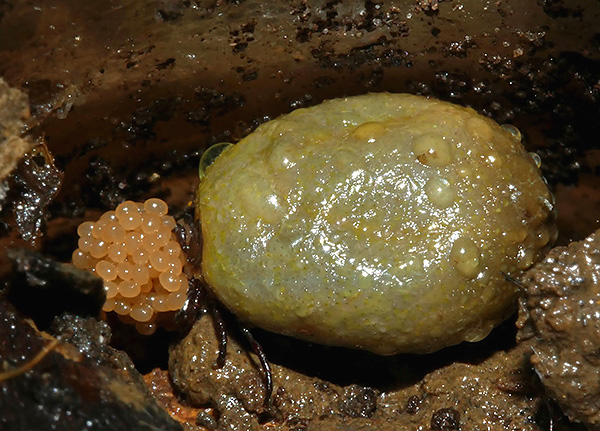
Eggs develop over 30-40 days and do not pose a danger to humans and animals. However, already at this stage, pathogens of infectious diseases can be transmitted from the female to the eggs.
Under favorable temperature conditions, accelerated hatching of larvae occurs from eggs. The larvae are full-fledged parasites, and for further development they must necessarily find a host-feeder. However, at this stage, tick larvae are practically not dangerous to humans, as they feed on the blood of small rodents or birds.
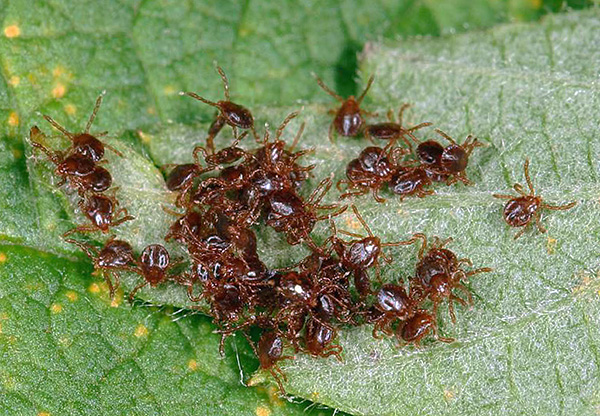
In most cases, the larvae do not find food for themselves during the first season and go into wintering, plunging into rotted leaves or making their way into bird nests. Overwintered tick larvae “wake up” in the spring and attack nestlings hatched in nesting areas or feed on the blood of small mammals.
The parasite feeds for 2-3 days, after which it leaves the host and begins the transition to the next life form. Depending on the favorable climatic conditions, the transition to the next stage may be delayed. The peak of parasitic activity of larvae occurs in autumn.
After molting, the larvae become nymphs. Nymphs of forest ticks are in many ways similar to an adult individual - both in shape and in size.
Nymphs wintering in the burrows of mammals go through the entire development cycle much faster, since they do not search for food. Individuals wintering in the forest litter, when positive average daily temperatures are established, become active and come to the surface to search for prey. In the middle lane, tick nymphs are active from early spring to late autumn, but this form of the parasite poses the greatest danger from mid-spring to early summer.
At this stage of development, the parasite requires larger warm-blooded animals to parasitize, and hares, badgers, foxes, and some domestic animals become its victims. In some cases, a person also becomes a victim.

On a note
Nymphs of ticks are dangerous for humans no less than adults, so they can be carriers of pathogens of diseases such as tick-borne encephalitis, Lyme borreliosis, tularemia and a number of others.
After saturation, the parasites leave the body of the host and climb into shelters for a serious restructuring of their body and the transition to the adult stage - imago. This process can take a long time, and its speed depends on the ambient temperature and the quality of the previous nutrition.
Thus, the entire development cycle of the ixodid tick can take from one to four to five years, and is accompanied by a constant change of hosts. The final stage of development of the parasite, the adult, is the greatest danger to humans.
Seasonal changes in tick activity
The activity of ixodid ticks has a pronounced dependence on the time of year (seasonality). In the central and more northern regions of Russia, where seasonal climatic fluctuations are the most noticeable, the biological rhythms of the parasite show distinct periods of activity slowdown—diapause.
There are two types of diapauses:
- Morphogenetic;
- Behavioral.
Morphogenetic diapause is associated with the loss of activity of the primary life stages of ticks.Most often, it is expressed by a slowdown in the process of hatching from eggs of larvae and a slowdown in molting in nymphs saturated with blood. This behavior allows the arthropod to synchronize its life rhythms with seasonal changes in temperature and humidity.
During morphogenetic diapause, ticks are inactive and not as dangerous to humans as in other periods.
It's important to know
Transmission of pathogens from ticks to humans can occur not only at the time of physical contact or bite. There are frequent cases of infection with tick-borne encephalitis from raw dairy products obtained from infected goats, sheep, and cows. In turn, infection of livestock is possible both when bitten by a tick, and when an infected parasite enters the body through the digestive system. Thus, there is a possibility of infection even during diapause.
Behavioral diapause is inherent in adult ixodids, and is expressed in a decrease in aggression and loss of activity during the search for food. This type of diapause is associated with seasonal changes in ambient temperature and daylight hours.
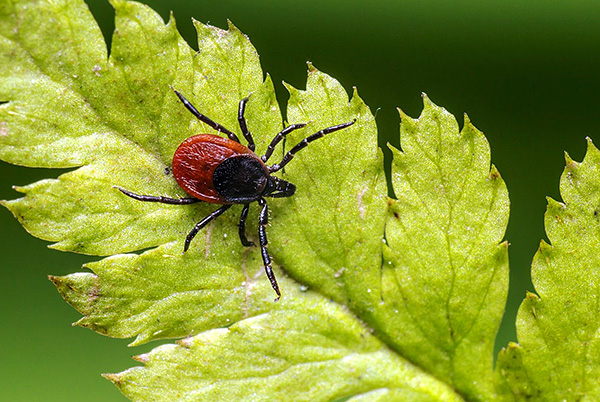
It is not uncommon for several natural and climatic factors to overlap each other and cause a long behavioral diapause in forest ticks. Under such conditions, the tick season subsides rather quickly, and adults leave for the winter hungry.
During diapause, ticks do not pose a serious danger to humans, as they are in an inactive state and do not hunt.
On a note
During the period of diapause, especially during wintering, the resistance to adverse effects of temperature and humidity increases many times over in ixodid ticks.
In early spring, after the snow melts, there is a peak in the physiological activity of adults. During this period, most often domestic animals suffer from tick bites - hunting dogs, as well as small cattle.
The risk of contracting infectious diseases through contact with ticks increases many times during the first warm spring days. This is due to the fact that a long diapause is abruptly replaced by an increased activity of ticks when a positive average daily temperature is established. Prolonged winter abstinence from food requires a large expenditure of vitality, so in the spring the mechanism of activation and increased aggression is activated in parasites.
The reactivation mechanism in ixodids, which is launched in early spring, makes them hunt even when the snow cover has not completely melted. The victims of ticks during this period are domestic pasture animals that have come out in search of vegetation that has appeared from under the snow.

The second peak of tick activity is observed in early autumn, when the average daily temperature and humidity are most favorable for spending most of the time in guarding mode. The greatest number of tick bites is recorded at the end of summer and peaks at the beginning of autumn, when the days are still quite warm, but there is no longer exhausting heat and lack of moisture.
In the middle of summer, especially during the dry seasons, the parasites are less aggressive, as the upper grass layers have too low humidity and strong exposure to sunlight.Hunting individuals are often forced to descend into the lower grass layers, where the microclimate is more favorable. Under such conditions, the lurking type of hunting is ineffective, and most parasites are forced to reduce their activity in search of prey.
Factors affecting parasite activity
The most optimal conditions for the growth and development of ixodid ticks are provided by a tropical climate. Tropical humidity and favorable temperatures contribute to the rapid transition from one life form to another. In countries with a warm climate, the life cycle of the parasite can be completed in one year or even less.
On the territory of Russia, in temperate and northern latitudes, ixodid ticks develop over a longer period.
It is interesting
Natural and climatic factors, such as negative temperature or low humidity, not only prevent the development of ticks, but also significantly increase the life of the parasite, sometimes by several times.
An important role in the seasonal activity of forest ticks is played not only by temperature and humidity, but also by the ratio of the length of day and night in diurnal cycles. Photoperiodic reactions are inherent in the vast majority of ixodid ticks. A change in the ratio of the longitude of day and night causes a response in parasites, including a change in reproductive activity (courtship season) and behavioral diapauses.
In northern latitudes, with increased daylight hours in summer, ixodid ticks exhibit completely different behavioral responses than individuals of the same species, but common in southern latitudes. Due to this, there is no drop in aggressiveness in the summer months, and the highest peak of activity of encephalitis ticks in the northern regions of Russia falls on June-July.
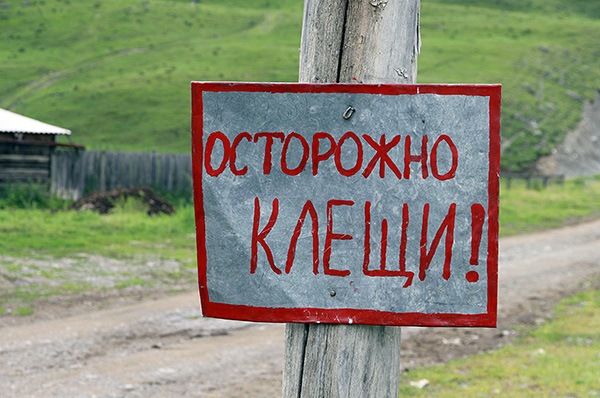
As a rule, each locality has its own populations of ticks, which are ideally adapted to specific natural and climatic factors and have formed their own well-established behavioral characteristics.
Tick activity in different climatic zones
The same species of ticks show completely different forms of behavior in zones with different climates.
So, in central Russia, in a zone with a temperate climate, two jumps in the seasonal activity of ixodid ticks in the spring and autumn periods are clearly expressed. In adults, peaks of activity are replaced by behavioral diapauses - summer and winter.
In the Moscow region, the spring surge of aggressive behavior begins in early April and continues until mid-June. The highest frequency of tick attacks on people is recorded in the first days of May, and lasts for two weeks. In mid-June, the tick season passes into a lull phase due to summer behavioral diapause and resumes in mid-August.
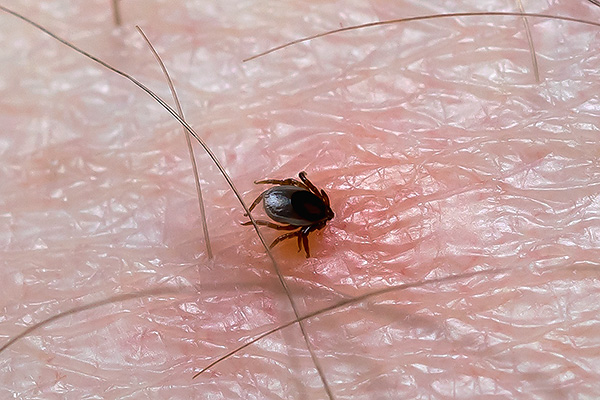
As a rule, mid-October in Moscow and neighboring territories coincides with the beginning of winter behavioral diapause in ixodid ticks, and its end occurs in early April.
In the southern regions of Russia (in the Volga region, in the Kuban), a surge in parasite activity is observed in early spring and ends in late autumn. Summer diapause is longer in hot regions.
In those climatic zones where rains are rare and dry summers are often observed, ticks are forced most of the time to be near the roots of plants at soil level - where there is a higher level of humidity. During these periods, the number of parasite attacks on humans and animals is significantly reduced.The seasons of tick activity in such climatic zones last from March to May and from September to November.
In the northern latitudes of the Leningrad Region, in Karelia, in the Urals, in Siberia, as well as in areas with an even colder climate, the summer diapause in ticks is short, and sometimes completely absent (moreover, it may depend on the weather).
In St. Petersburg, the maximum recorded attacks on humans occur in the first and last weeks of summer. And in the Arctic, the activity of parasitic individuals reaches its highest point in June-July.
During periods of high activity of ticks, it is necessary to behave most carefully. To reduce the likelihood of becoming a victim of the parasite, you need to dress properly when going out into nature and take additional protective measures in advance.
The risk of infection with tick-borne encephalitis and borreliosis depending on the season
Ixodid ticks are specific carriers of pathogens of many transmissible natural focal diseases that are dangerous to humans and domestic animals.
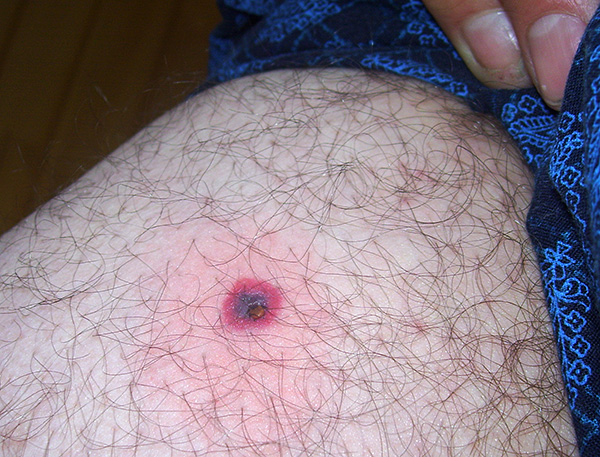
The most dangerous are tick-borne encephalitis and borreliosis. The causative agents of these diseases can be in the body of the tick at all stages of its development - from the egg to the adult.
Most often, taiga ticks are carriers of dangerous diseases - their degree of infection reaches 10-15% of the total population.
Human infection with tick-borne encephalitis can occur in two ways:
- Transmissible - by direct contact, bite or crush of an infected parasite;
- Alimentary - when eating milk of sick animals or dairy products that have not undergone heat treatment.
On a note
Goats and sheep can asymptomatically carry the tick-borne encephalitis disease and be a source of increased danger to humans.
The likelihood of encephalitis in humans directly depends on the size of the parasite population in the area of residence, the degree of their aggressiveness, as well as the size of the natural focus of pathogens.
During periods of summer diapause, the chance of becoming a victim of an infected tick is significantly lower. However, grazing animals often swallow tick larvae along with grassy vegetation and become carriers of a dangerous disease themselves.
On the territory of Russia, Siberia, the Far East and Karelia are among the epidemic regions for tick-borne encephalitis. In the center of Russia, including the Moscow region, the incidence of this disease is low. Below is a map of the distribution of tick-borne encephalitis:
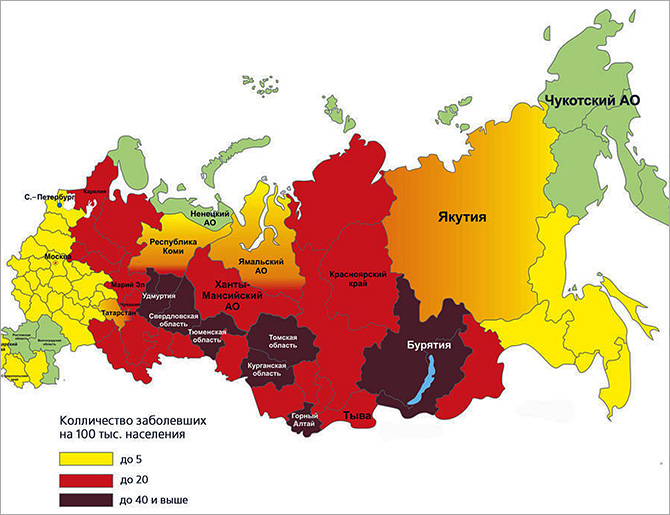
Another, no less dangerous disease transmitted by ixodid ticks is borreliosis (Lyme disease). The distribution area of this disease covers the entire territory of the Russian Federation, from Kaliningrad to Sakhalin. Borreliosis is registered in all regions of the country with a frequency of two to four cases per one hundred thousand inhabitants.
The probability of contracting tick-borne borreliosis directly depends on natural and climatic factors and the size of the tick population in the area.
It's important to know
Transmission of the causative agent of Lyme borreliosis to a person can occur not only by a bite, but also by crushing the parasite while removing it from pets (through damaged skin).
The most dangerous epidemic periods coincide with the periods of seasonal activity of ticks and have pronounced jumps from April to June and from August to October.
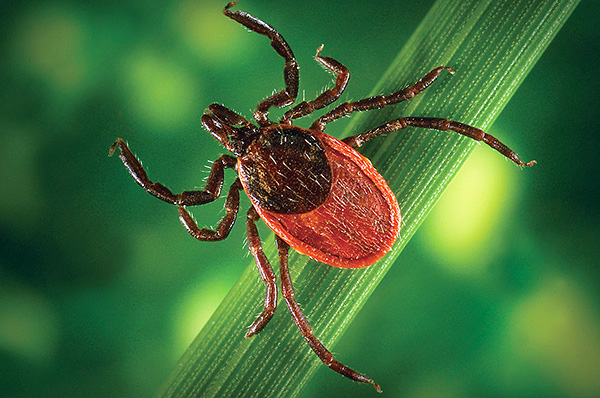
During the hot period, ixodid ticks make diurnal migrations between grass layers, therefore at night there is an increased chance of becoming a victim of the parasite. All ixodid ticks are active around the clock outside the diapause period.
Also, a serious factor that increases the number of foci of the causative agent of borreliosis is the number of small vertebrates within the habitat of the parasite. In some climatic zones, the maintenance of natural reservoirs of Borrelia is provided exclusively by mice, voles and shrews. With a decrease in the number of these rodents, the number of registered diseases of tick-borne borreliosis among the local population is significantly reduced.
The season of increased risk of contracting tick-borne infections, as a rule, directly depends on the activity of the parasite. And although humans are an occasional component of the tick parasitic system, it is important to always remember preventive safety measures, especially during those periods when the seasonal activity of the parasite reaches its maximum.
How to protect yourself from tick bites: testing repellents

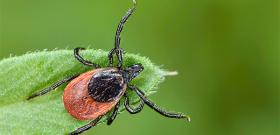
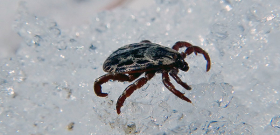
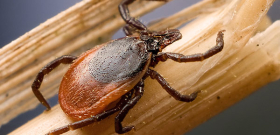
We used the domestic preparation Favorit. We worked on our summer cottage on our own back in the spring, when the ticks became more active. Still does not remember about these parasites!